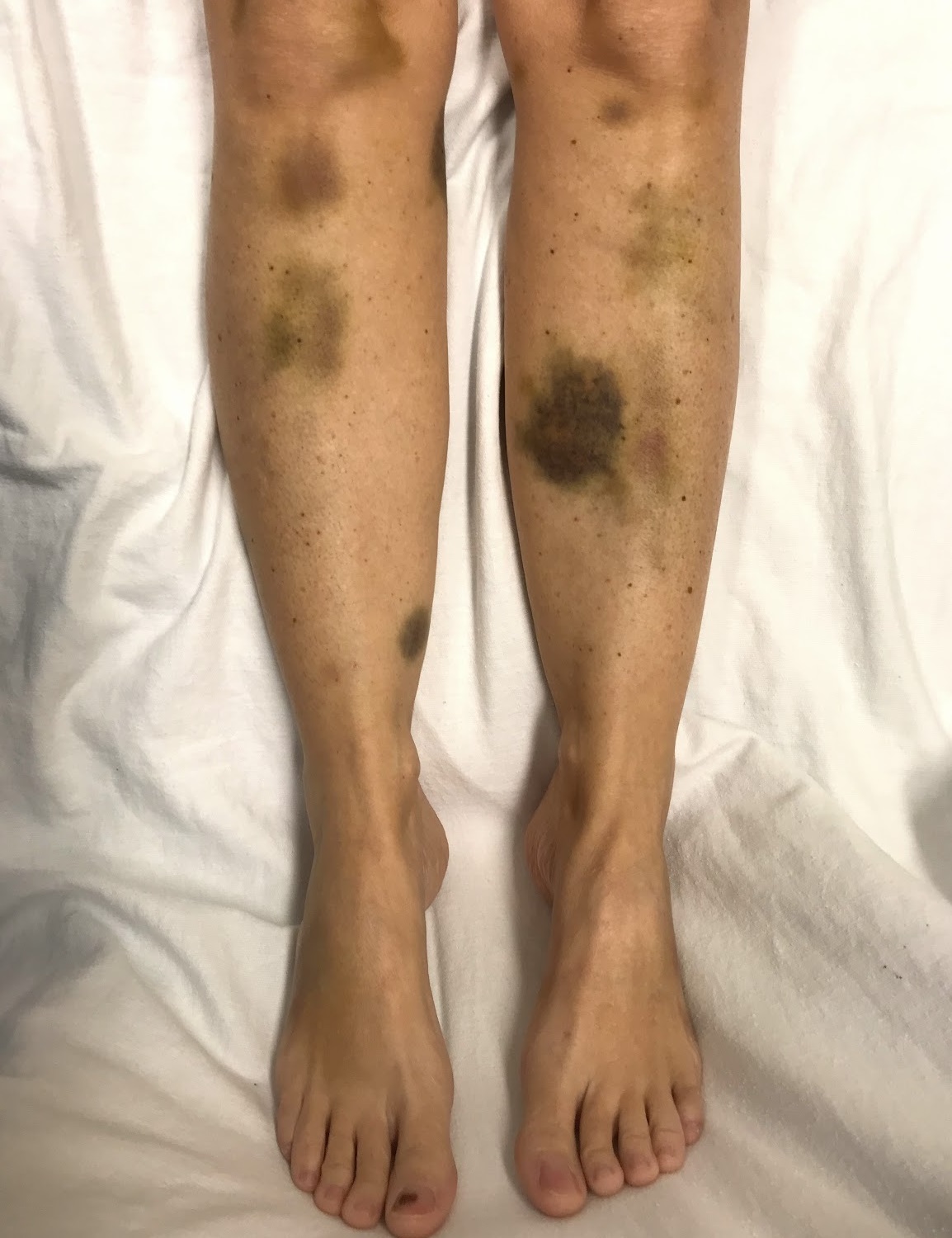Thrombotic Thrombocytopenic Purpura

An aggressive and life-threatening form of thrombotic microangiopathy (TMA) characterized by profound peripheral thrombocytopenia, microangiopathic hemolytic anemia (MAHA) and organ failure of variable severity and is comprised of a congenital (cTTP) and acquired, immune-mediated (iTTP) form.
Clinical description
iTTP generally occurs in adulthood, whereas cTTP usually in the neonatal period, during childhood or in the setting of pregnancy. Onset is usually acute but early symptoms may include fatigue, purpura or ecchymoses, abdominal pain, arthralgia and myalgia, resembling a flu-like episode. Disseminated microvascular thrombosis leads to consumptive peripheral thrombocytopenia, MAHA and widespread organ injury associated with cerebral (headache, confusion, altered consciousness, coma, seizures, hemiparesis and visual disturbances), cardiac (arrhythmia, infarction, congestive heart failure and cardiac arrest) and gastrointestinal (nausea, vomiting, abdominal pain and diarrhea) manifestations. Purpura and petechiae are the most common bleeding manifestations. Renal involvement is usually mild. Fever occurs in less than 50% of patients. Patients with iTTP may suffer from only one episode, but relapses can occur in 30 to 40% of cases in the absence of preemptive therapies. A chronic and frequently relapsing disease course is more typical in those with cTTP, without prophylactic treatment.
Etiology
TTP is caused by a severely decreased activity (< 10%) of ADAMTS13, a metalloprotease involved in the cleavage of ultra-large von Willebrand factor multimers. In cTTP, ADAMTS13 deficiency is caused by homozygous or compound heterozygous mutations ADAMTS13 (9q34), whereas it is associated with the presence of anti-ADAMTS13 immunoglobulin G (IgG) antibodies in iTTP.
Diagnostic methods
First, the diagnosis of TMA must be evoked in a patient with MAHA and a negative direct antiglobulin test, associated with a peripheral thrombocytopenia, especially if there is an associated organ failure (cerebral, renal or cardiac involvement, abdominal pain). Once the diagnosis of TMA is made, TTP must be recognized. The diagnosis can be strongly suspected in a patient with TMA when thrombocytopenia is profound (platelet count < 30 G/L) and when renal involvement is only mild (serum creatinine level < 2.27 mg/dL). However, the diagnosis of TTP can only be ascertained by an undetectable ADAMTS13 activity (activity < 10%). cTTP is characterized by a persistently severe ADAMTS13 deficiency with no identifiable anti-ADAMTS13 antibodies. The sequencing of ADAMTS13 gene then identifies bi-allelic mutations. Acquired, iTTP is associated with anti-ADAMTS13 antibodies in serum. In 20% of cases, antibodies may not be detectable, but ADAMTS13 activity normalizes after the acute phase.
Differential diagnosis
Differential diagnosis includes other TMAs (hemolytic uremic syndrome, TMA secondary to transplantation, chemotherapy, drug, HIV/AIDS, as well as HELLP syndrome) and other diseases including catastrophic antiphospholipid syndrome, severe sepsis, vitamin B12 deficiency, malignant hypertension and severe disseminated intravascular coagulopathy.
Genetic counseling
cTTP is inherited autosomal recessively and genetic counseling is suggested. The risk of inheriting the disease is 25% where both parents are unaffected carriers.
Management and treatment
Given the severity of the disease and the risk of sudden organ failure, management in intensive care units until platelet count recovery is recommended. The current standard of care consists of plasma exchange replenishing active ADAMTS13 from donors' plasma (and to a lesser extend removing anti-ADAMTS13 antibodies and pro-aggregant substances), immunosuppressive therapies (e.g. glucocorticoids and rituximab) to prevent ADAMTS13 antibody production, and caplacizumab. Caplacizumab is a nanobody that targets von Willebrand factor (VWF) and accelerates platelet count recovery and prevents worse outcomes. After recovery, patients benefit from long-term follow-up with regular assessment of ADAMTS13 activity. Where decreased ADAMTS13 activity is observed, a preemptive infusion of rituximab should be proposed.
Prognosis
With a rapid diagnosis and the current standard of treatment, the prognosis of the disease is usually excellent with a complete recovery in more than 95% of cases. However, in a substantial number of cases patients suffer neurocognitive disorders including chronic fatigue, problems of memory and concentration, as well as depression. These troubles still have no clear explanation, and significantly impact quality of life.